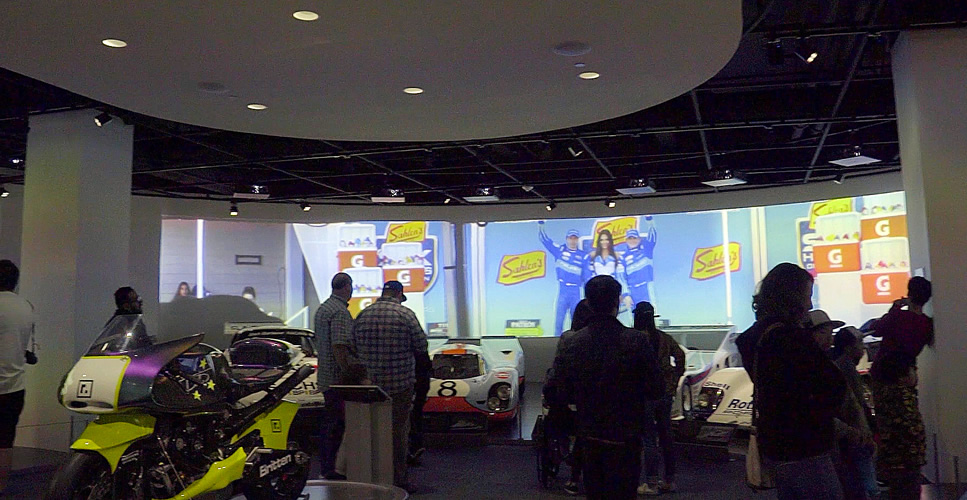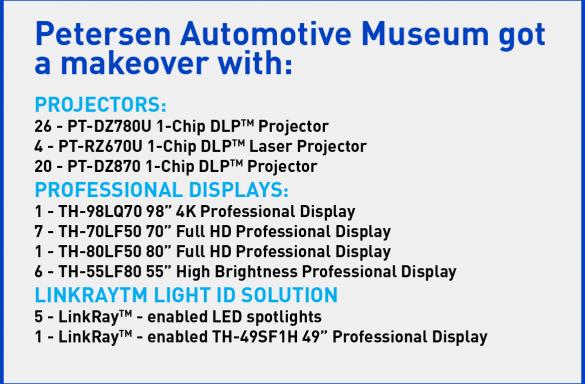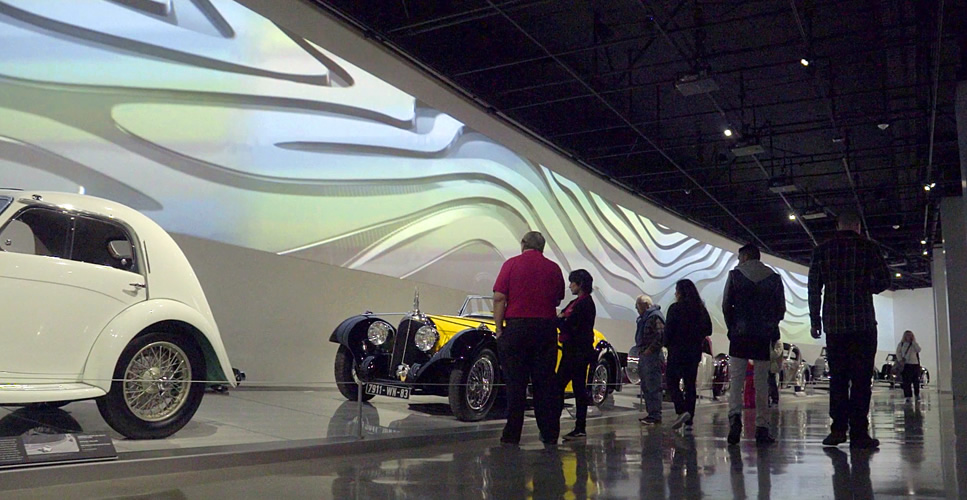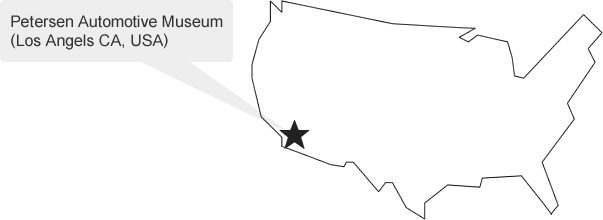September 7, 2018
4 min read
Petersen Automotive Museum
"(Panasonic really is) a one-stop shop, which we knew made them a perfect long-term strategic partner for the museum."
Frank Janesh (CTO at The Scenic Route)
Why Choose Panasonic?
- Panasonic could deliver a full range of projectors and professional displays to support a variety of exhibit sites.
- The Multi-Screen Support System for seamlessly edge-blended images on a wide wall.
- DIGITAL LINK connectivity offered simple, high-quality digital transmission to reduce installation cost and fulfill the requirement of museum-quality.
Shaking up one of the world's largest automotive museums
Petersen Automotive Museum, which aims to “explore and present the history of the automobile and its impact on American life and culture using Los Angeles as a prime example,” is one of the largest such museums in the world. Part of that renovation was a significant focus on technology and making the exhibits relevant from an experiential point of view.
Adam Langsbard, Chief Marketing Officer of the Petersen Automotive Museum, recalls that the efforts began with the question: “What is the future of content consumption and what is its role in the museum?” The answer was drawn from overarching consumer trends that can’t be ignored: we consume more video today than we ever have before.
Said Langsbard, “We instantly saw the need for video to become an integral part of the museum experience. Rather than recreate dioramas that show a freeze frame of history, we quickly decided we needed a video partner to deliver content in a dynamic, fresh way throughout each gallery.”
Bringing the creative vision to fruition
Langsbard and his team delivered on that, integrating video into every one of the 25 galleries across the museum’s three floors. The projection images needed to be stitched together via edge blending technology and as the museum was determining a partner, found that the Panasonic projectors enabled them to customize that content and have a flexible configuration for each room.
“This is where the other companies started to fall off: they couldn’t produce the vision we had for a 180-degree gallery,” added Langsbard. “We felt strongly about the idea of stitching all these projectors together in a semi-circle so that visitors would be totally immersed in the content, and we needed a technology solution that could build our creative vision.”
(Second floor) An immersive video describing the thrill of motorsports is displayed on a 180-degree arched wall.
The final product was built from 47 Panasonic projectors and 15 professional displays. Each Signature gallery has a distinctive video wall and uses a large number of projectors (ranging from 10–15 projectors per wall).
To bring the vision to fruition, the museum tapped The Scenic Route, a global production company, to oversee the deployment. The firm’s CTO for special projects, Frank Janesh, was deeply familiar with all the AV manufacturers having worked on installations ranging from the Grammys to massive tradeshows such as E3.
Said Janesh, “There are many great projectors out there, and we knew Panasonic creates high-quality product. But we wanted to work with one partner for both projection and professional display—and we needed a range of lumen options even within the projector category. Since the heroes of the museum are cars, we wanted to let them be the star and not over or under-power them with the light output. By working with Panasonic, we could work with a range of lumens while maintaining similar color quality and resolution, so the imagery would be consistent throughout.”
(First floor) A large-scale abstract video, “Artistry of the Automobile,” spreads over a 166-foot wide wall.

Panasonic projectors and professional displays are used in various locations.
Janesh continued, “Some manufacturers only do projectors well, and we knew that Panasonic could deliver a full range of those plus displays. They are really a one-stop shop, which we knew made them a perfect long-term strategic partner for the museum.”
Another consideration was ease of use and installation. Panasonic’s HDBaseT feature DIGITAL LINK™—which comes native for all the projectors selected and most of the displays used at the museum—enables transmission of uncompressed HD videos and control commands over shielded CAT5e cable or above. Notes Janesh, “This was a huge benefit and allowed us to keep native format from the output side to input side, without needing additional adapters. As a result, there were fewer things to troubleshoot from an integration perspective. This streamlined the video distribution and saved the museum both time and money.”
The museum's grand re-opening attracted about 38,000 visitors and over 500 journalists, underscoring the power of a digital museum experience. Adds Langsbard, “We know Panasonic can grow with our plans given its holistic approach to consumer endpoints and integrated solutions. It’s not difficult to draw a correlation between how Panasonic sees the future and the direction this museum is headed.”
Related video
Location
![]()





